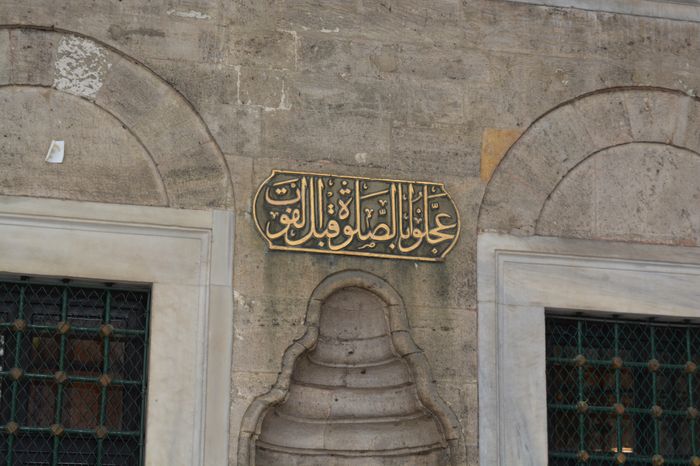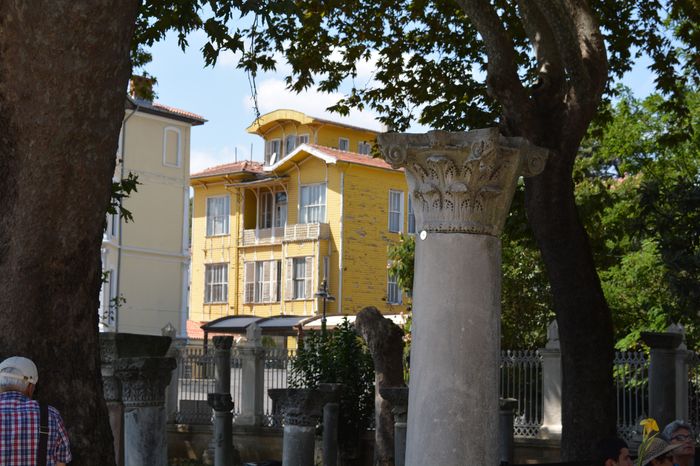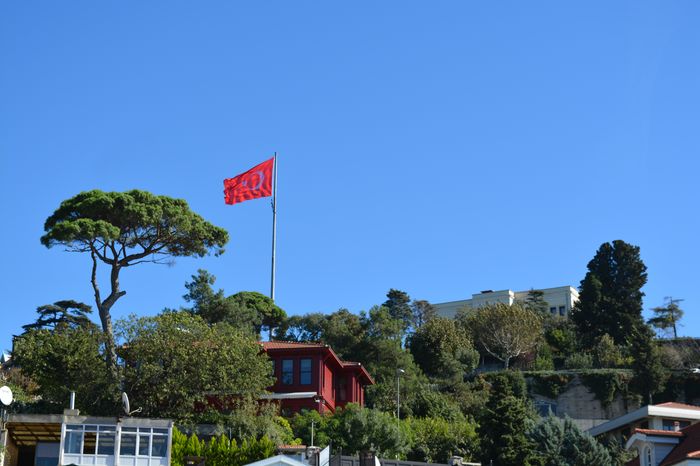The best approach to the palace was from the west, on foot. The great middle street of the city drew together those who arrived from different gates, leading them southeast to city center. The street became a ceremonial stage in its own right, with porticoes on both sides, regularly occupied by successful merchants and professionals. The more pompous and grander Forum of Theodosius came first as you approached; then, closer to the palace, came the older and less overbearing forum of Constantine. Beyond that, the last stretch of the now grand, formal main boulevard entered the Augustaion, the last open square between the circus and the church, where in 543 Justinian would have a huge statue of himself erected on a lofty column, displaying the full military prowess he claimed probably without spending a day of real soldiering in his life. It lasted there until the sultan Suleiman the Magnificent tore it down in the sixteenth century.
From the Augustaion, the highly privileged entered the palace proper through the great bronze gate called the Chalke, where Justinian had covered the ceiling under the arches with mosaics displaying his great vicarious military triumphs (his general Belisarius actually won them for him) over the Vandals first and then eventually the Goths. Nothing was quite permanent in such a place and there was always elaboration, development, redecoration, and the perfecting anew of the proper temple for the residence and veneration of the current ruler.
Great halls
The rest of the complex cascaded out behind the great gate, sprawling down the hill to the water. Great halls with triple doors and antechambers lay hidden within high walls. In imperial audience rooms, a raised platform stood at the end of the hall, to be approached through an elaborate twisting and turning of corridors, curtained alcoves, and inlaid floor patterns that guided the subject or guest to the emperor’s seat. Visitors saw consistories, or meeting halls; and triclinia, or banquet rooms. The greatest of these, the Triclinium of the Nineteen Couches, held 228 guests, but this proved too vast for certain kinds of private splendor, so later in the sixth century the emperor Justin II added the Golden Banquet Hall, octagonal in shape, domed above, with room for a mere 102 select guests in an even more opulent setting tour bulgaria.
Elaborate mosaics, their tiny tiles carefully pieced together and cemented in place by hand in dazzling patterns, were the decoration of choice, in enormous variety. Mosaic scenes included a tiger hunt, a bear devouring a young stag, a bear chasing a young man, a fight between an elephant and a lion, an eagle biting a snake, a boy feeding his donkey, a monkey attempting to dislodge a bird from a tree, the mythical hero Bellerophon fighting the Chimera, the head of a young man with a bear, the head of a mustachioed youth amid foliage, and a mock chariot race in the Hippodrome with four drivers.10 Neither the wizard of Oz nor the builders of Caesars Palace in Las Vegas could outdo what the emperor of Constantinople had already mastered to perfection.
Palace at Chalcedon
The court was now the home of all power. Rome had come full circle and Tacitus was now wrong, for emperors could scarcely be imagined, much less made, anywhere other than in the capital and indeed in the palace. If the emperor set foot outside his palace in the city, it was only for ceremonial and usually religious reasons. From time to time, he might flee the city for another palace at Chalcedon, in sight across the Bosporus, but if he did so he left by water from within the palace grounds, without having to pass through the crowded city streets.
The palace was the place for the wearer of the purple. The technology of ancient dye making had advanced to a point where moderns could envy it. In the days of the republic, Rome had allowed purple or purple-edged garments as a sign of public office and success. From what we know of the dyes involved and from surviving representations in art, the hue was probably closer to that seen on Roman cardinals today than to our Newtonian sense of purple as an equal mix of blue and red. Under the early empire, fashion took over and the color became more common among the rich, and eventually Roman men overcame their disdain for effeminate silk and turned out in fine, glowing fabrics The church reopened at the Christmas season.
The greatest dye works were at Tyre in the eastern Mediterranean, where sea creatures were harvested for their durable coloring. The emperor Diocletian took over the works as an imperial possession; his introduction of eastern ways into his court included the creation of a new wardrobe of purple silk to replace the former sturdy, sensible wool. Within a century, only the emperor could wear the special color; anyone else who wore it was guilty of treason. During the fifth and sixth centuries, increasingly agitated emperors legislated ineffectually against such encroachment. One way Theoderic showed himself imperial in demeanor was by wearing purple silk (acquired from a western source), while banning it for all others in his realm.








